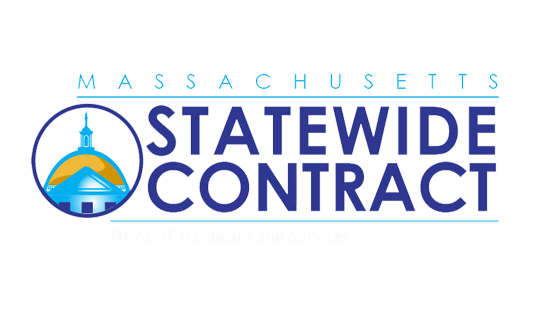BNMC Blog
The Unavoidable Challenges of Cloud Migration and How to Budget for a Modern IT Stack
Embracing the cloud has become essential for businesses aiming to remain agile, cost-efficient, and competitive. As more organizations recognize the benefits of cloud computing, the migration to cloud environments has accelerated. However, this rapid adoption presents its own set of challenges. Companies encounter issues ranging from data security concerns to potential downtime and compatibility problems during the migration process.
Moving workloads, applications, and data to the cloud requires careful planning and strong security measures to protect sensitive information. Additionally, budgeting for a modern IT infrastructure can be complicated. The costs of cloud infrastructure, software, and the ongoing management needed for optimized cloud operations can accumulate quickly. Therefore, it is crucial to anticipate and accommodate these expenses. Engage with IT Support Providers in Nashua to mitigate cloud migration challenges.
In this blog, we will explore the unavoidable challenges of cloud migration and highlight strategies for effective budgeting to build a resilient and future-proof IT stack.
What is Cloud Migration?
Cloud migration is the process of transferring an organization's digital assets, including data, applications, and IT resources, from on-premises infrastructure to a cloud computing environment. This transition allows businesses to leverage the scalability, flexibility, and cost-efficiency of cloud services. Additionally, cloud migration can involve switching between cloud providers, referred to as cloud-to-cloud migration, or establishing a hybrid model that maintains some resources on-premises.
5 Key Challenges of Cloud Migration
-
Data Security and Compliance
Data security and compliance risks are significant challenges organizations face during cloud migration. When migrating to the cloud, companies must protect sensitive information from unauthorized access and breaches. Adhering to industry regulations and data protection laws is also essential to avoid legal consequences.
To mitigate these challenges, it is crucial to implement robust security measures, such as encryption protocols and access controls. Additionally, conducting thorough risk assessments and audits throughout the migration process can help identify and resolve potential vulnerabilities before they escalate into major issues. If you want to protect your business data, contact the Managed IT Services Boston team.
-
Employee Skill Gap
One of the pivotal challenges that organizations may face in cloud migration is the employee skill gap. Transitioning to the cloud requires a different skill set compared to traditional on-premises systems. Employees need to be trained in areas such as cloud architecture, security, and compliance to effectively manage and optimize cloud resources.
To mitigate this challenge, bridging this skill gap is essential to ensure a successful cloud migration process. Organizations can address this challenge by providing training programs, hiring skilled professionals, or partnering with external experts to effectively support their cloud migration journey.
-
Vendor Lock-In
Vendor lock-in is a significant challenge that organizations may encounter during cloud migration. This situation occurs when a company becomes reliant on a specific cloud service provider, making it difficult or expensive to switch to a different provider later on. Vendor lock-in can limit flexibility, hinder scalability, and expose the organization to risks, especially if the chosen provider experiences downtime or service disruptions.
To mitigate this challenge, businesses should carefully evaluate their cloud provider options, consider adopting multi-cloud strategies, and negotiate flexible contracts that facilitate easier transitions between providers if necessary.
-
Inadequate Migration Strategy
An inadequate migration strategy is a critical challenge organizations face during cloud migration. A comprehensive migration strategy is essential for ensuring a smooth transition to the cloud without disrupting business operations. Without a detailed plan, companies may experience issues such as data loss, security breaches, or compatibility problems with existing systems.
To address this challenge, businesses should invest time and resources in developing a thorough migration strategy that outlines their goals, timelines, resource allocation, risk assessment, and contingency plans.
Effective Strategies for Budgeting a Modern IT Stack
-
Assess Current IT Costs and Needs
Assessing current IT costs and needs is a vital strategy for developing effective budgeting plans for a modern IT stack. By thoroughly evaluating your existing IT infrastructure, software licenses, maintenance expenses, and anticipated future requirements, you can gain valuable insights into your current budget allocation and identify potential cost-saving opportunities.
This assessment will help you pinpoint inefficiencies, redundant services, or underutilized resources that can be optimized or eliminated, thereby streamlining costs and improving the overall efficiency of your IT operations.
-
Prioritize Essential Cloud Services and Tools
When budgeting for a modern IT stack, it is essential to prioritize key cloud services and tools to ensure optimal efficiency and cost-effectiveness. Cloud services play a crucial role in modern IT infrastructure, providing scalability, flexibility, and enhanced collaboration capabilities.
When selecting cloud services and tools, consider aspects such as security features, integration capabilities, scalability options, and pricing structures. By focusing on essential cloud services that align with your business goals and IT requirements, you can streamline operations, boost productivity, and maximize the value of your IT investments.
-
Factor in Ongoing Operational Expenses
It is important to factor in ongoing operational expenses when strategizing your IT budget. While upfront costs are necessary, it is equally important to account for the long-term operational expenses related to maintaining and upgrading your IT infrastructure.
These ongoing costs may include software licenses, cloud service subscriptions, maintenance fees, and employee training expenses. By carefully analyzing and estimating these operational expenses, businesses can create a comprehensive budget that ensures the sustainability and efficiency of their IT stack over time.
-
Allocate Resources for Security and Compliance
When budgeting for a modern IT stack, allocating resources for security and compliance measures is crucial. In today's rapidly evolving technology landscape, cybersecurity threats are becoming increasingly sophisticated, making it essential for businesses to prioritize strong security protocols.
Organizations can protect their data and infrastructure from potential breaches by investing in security solutions such as firewalls, encryption tools, and regular security audits. Furthermore, ensuring compliance with industry regulations and standards is imperative to avoid penalties and maintain customer trust.
-
Plan for Scalability and Future Growth
While developing a budget for a modern IT stack, it is essential to plan for scalability and future growth. As technology evolves quickly, businesses must anticipate their IT needs to grow alongside them. Planning for scalability requires assessing potential increases in workload, data volume, and user base to ensure that the IT stack can accommodate future demands without affecting performance or incurring additional costs.
By investing in scalable solutions from the outset and considering factors like cloud services and virtualization, organizations can create a flexible IT infrastructure that adapts easily to evolving business requirements.
Conclusion
Cloud migration offers organizations tremendous opportunities for agility, scalability, and cost savings. However, it also presents considerable challenges. Issues such as data security, skill gaps, vendor lock-in, and the necessity for a solid migration strategy can affect the success of a cloud transition. Additionally, budgeting for a modern IT stack requires a careful balance between essential services, ongoing expenses, and future growth needs. By thoughtfully addressing both the challenges and financial considerations, businesses can ensure a smoother migration process and establish a sustainable, future-ready IT infrastructure that supports their long-term goals.
Comments



